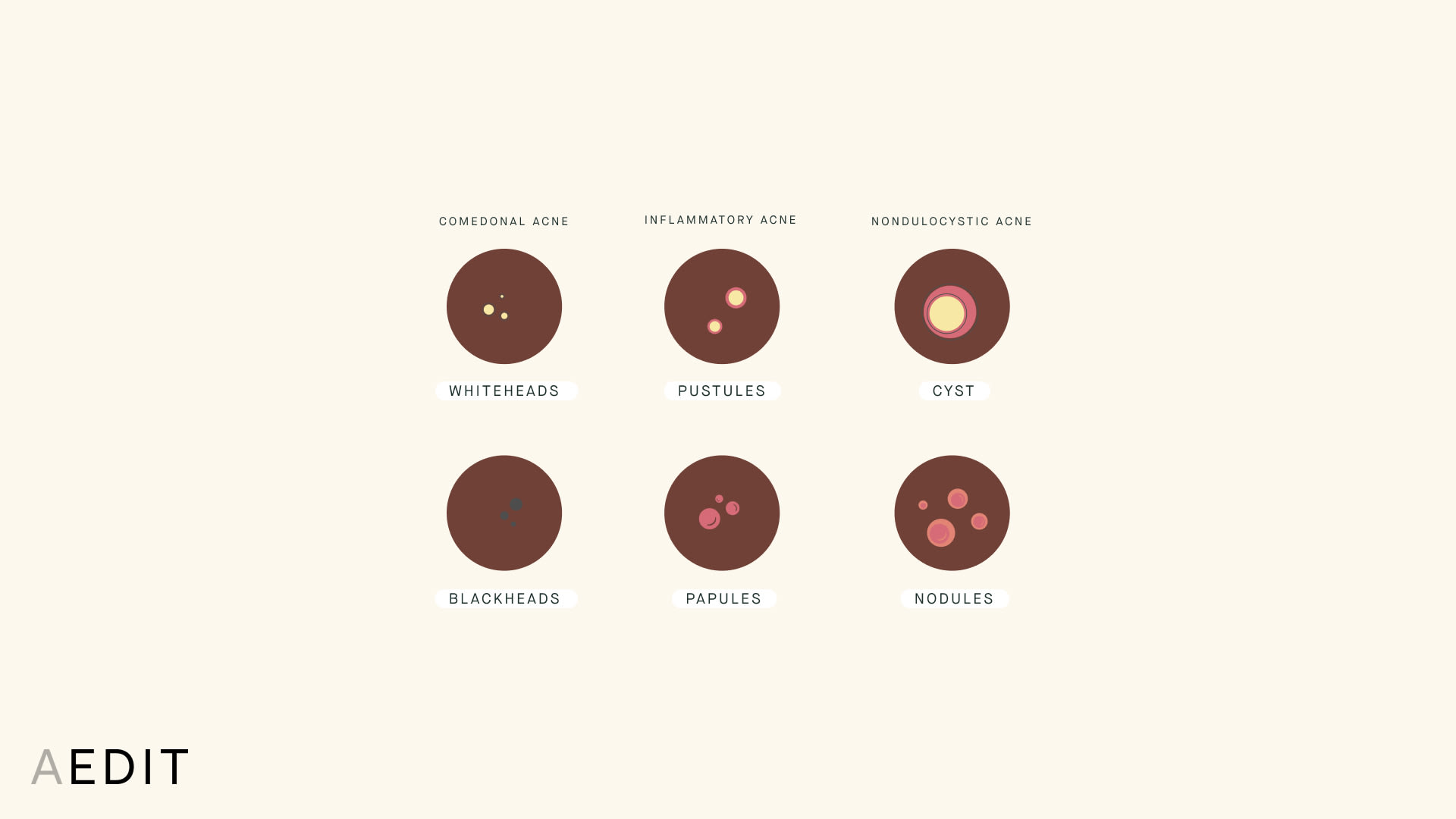Acne
There might be a few (or a lot) of things you wouldn’t have minded growing out of. If your acne followed you out of high school, fear not you can ditch those unwanted blemishes once and for all.
Considered to be the most common skin condition in the United States by the American Academy of Dermatology (AAD), acne does not discriminate. According to the AAD, 85 percent of people between the ages of 12 and 24 experience at least minor acne. Those with a family history of acne typically experience some level of acne vulgaris in their lifetime.
Breakouts in the form of blackheads, pimples, cysts, and blemishes can occur anywhere on the face and body when hair follicles become clogged with oil and dead skin cells. And while acne can be a pain to both your skin care and confidence, there are an array of professional and at-home treatments aimed at clearing skin and preventing future breakouts.
So what exactly causes acne? We all know not to touch our faces, leave our makeup on too long, workout and skip the face wash, etc, but what about when we do all these things and still experience those annoying blemishes?
Our skin is composed of three main layers. The epidermis is the topmost layer and contains our melanocytes (skin pigment producing cells). Next is the dermis containing hair follicles, and sebaceous (oil) and sweat glands. Finally, the hypodermis contains connective tissue and fat.
Acne occurs when hair follicles in the dermis get clogged. This can be caused by oil, dead skin cells, and bacteria (specifically, propionibacterium acnes). The areas where acne most commonly occurs, like the face, back, and chest contain the highest numbers of oil glands.
Sebum (oil) regulation is closely correlated to our hormones. Can you think of some crazy hormone times? Puberty, menstruation, and pregnancy commonly cause acne flare ups. Also, since birth control is used to regulate female hormones certain formulations can actually benefit acne.
Acne flare ups can range from mild comedones like whiteheads and blackheads to deeper, sometimes painful, cystic acne. The severity of acne is correlated to the underlying cause. Genetics, hormones, stress, environmental factors, and diet will all contribute to the formation of acne.
To better understand how your acne lesions are classified let’s start breaking down the general categories of acne.
To continue our breakdown, let’s look at the subcategories within the inflammatory and non-inflammatory designations.
Types of Acne
Acne is a nuisance. While the spectrum of acne varies greatly, there are treatment options for all forms regardless of severity. Any individual frustrated by persistent and noticeable acne that is resistant to daily over the counter skin care may wish to seek professional assistance. A logical first step is to create a consistent skincare routine, trial skincare regimens, alter the diet, and identify potential triggers. If these methods fail, a trip to a professional is the next step.
When it comes to acne, treatments are uniquely tailored to the individual. Acne treatments include topical antibiotics, facial peels, skincare products, and retinol creams. The treatment depends on the type of lesion. A dermatologist can diagnose acne vulgaris, and recommend an array of professional and/or home remedies to clear skin and prevent future breakouts.
For a complete look at the treatment options outlined above, check out our guide to Acne Solutions.
From skincare to diet and lifestyle, there is plenty you can do from the comfort of your own home to treat and prevent acne.
Skincare products with antibacterial and anti-inflammatory ingredients can help to heal and prevent breakouts. Most of these over-the-counter skin care treatments simultaneously exfoliate and rejuvenate the skin:
While there is no specific research supporting a correlation between diet and acne, certain high-glycemic foods, such as chips and candy, can trigger excess sebum production. A healthy lifestyle limiting these foods in combination with sleep, hydration, and exercise can alleviate acne.

